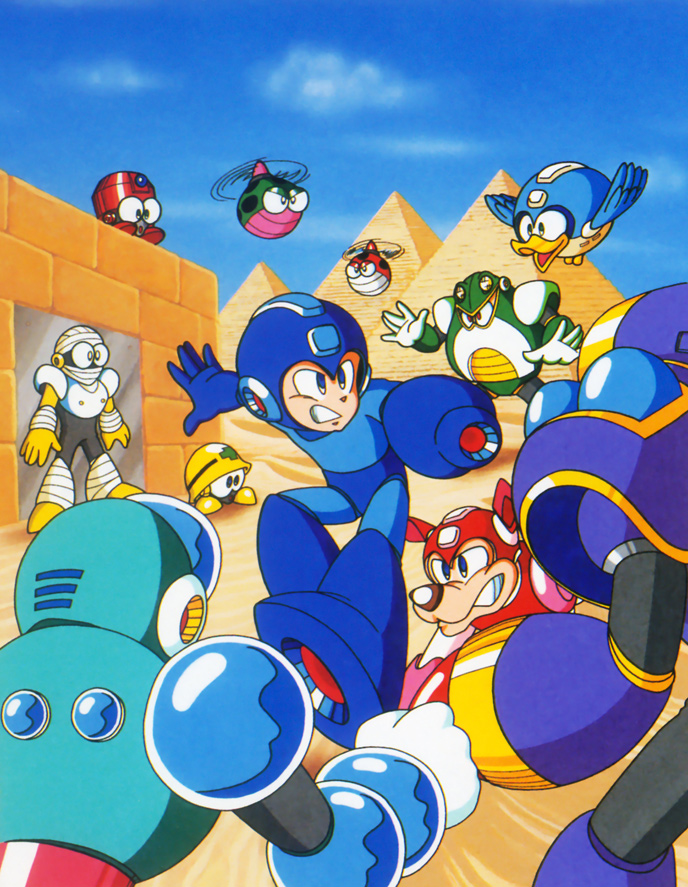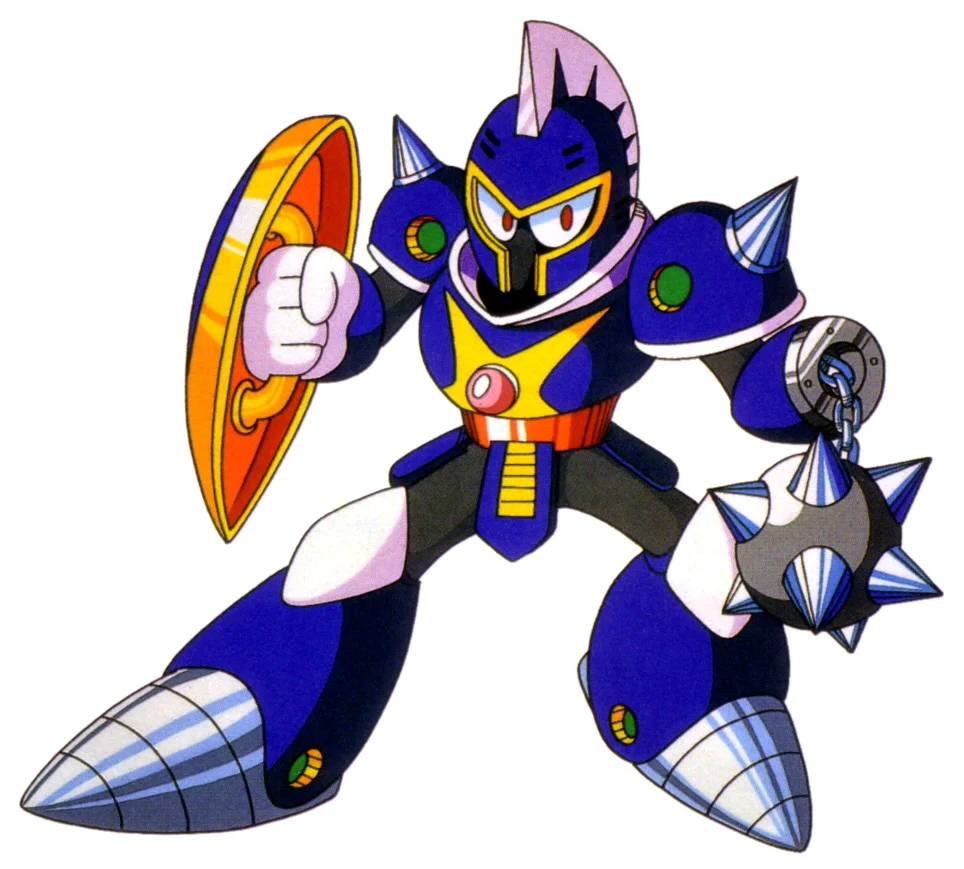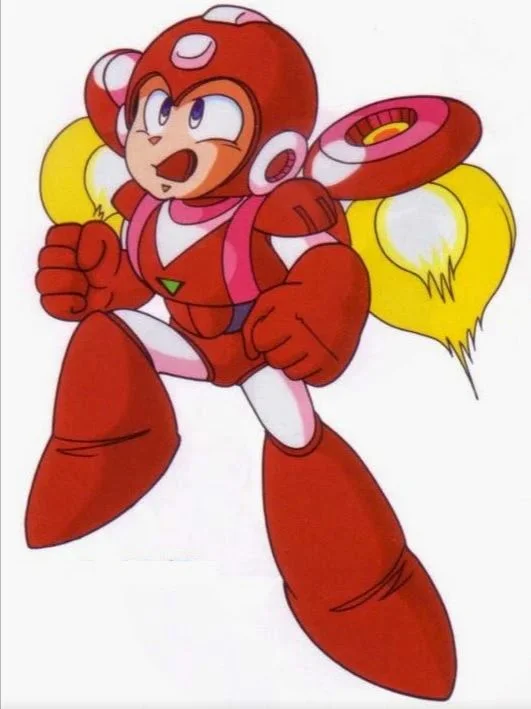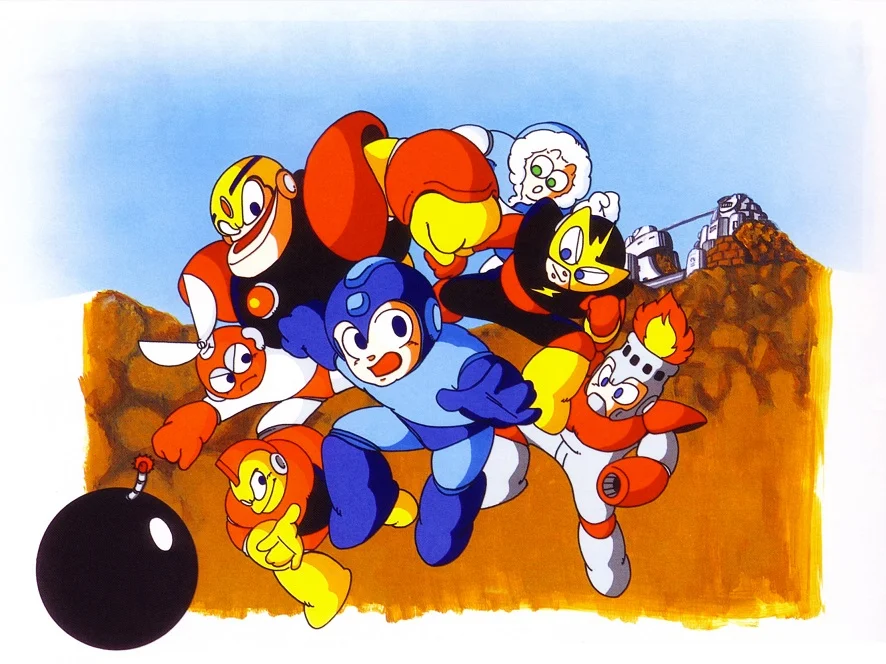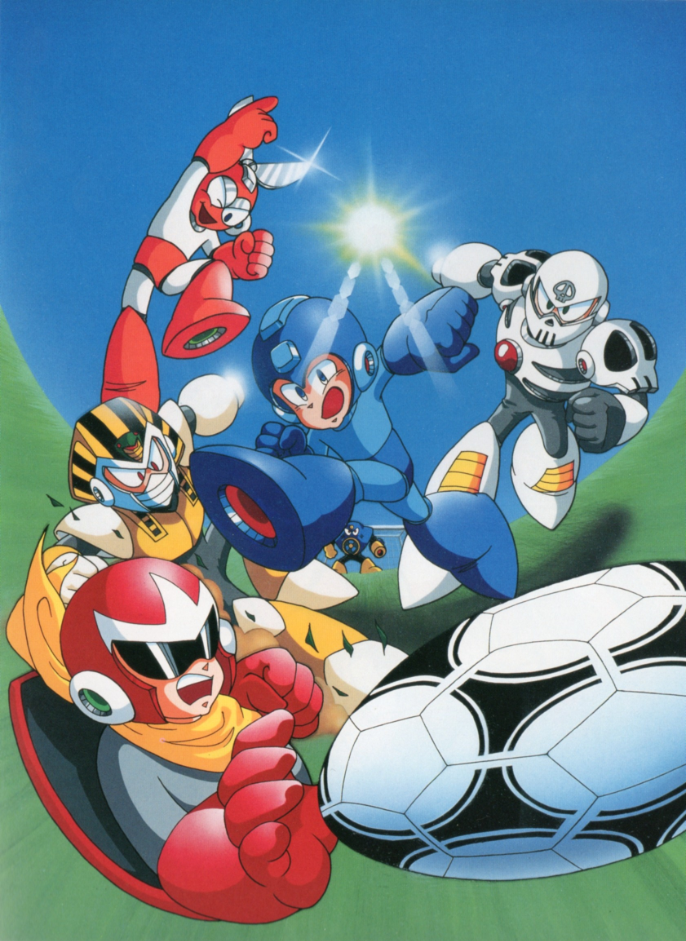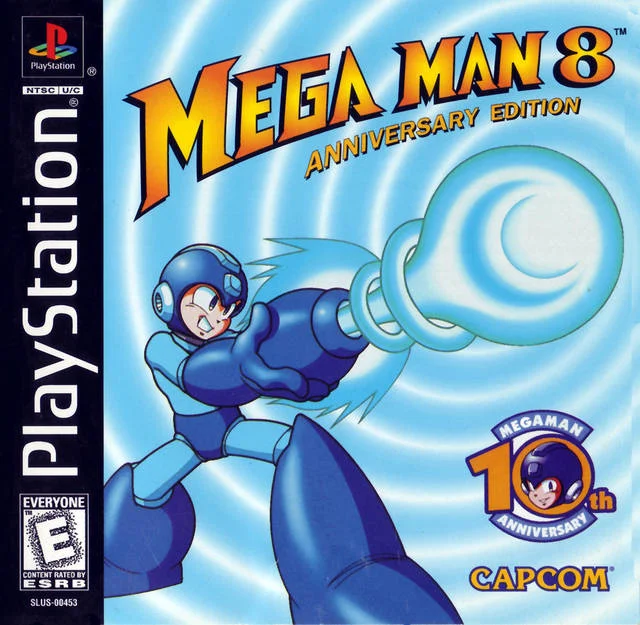Welcome to Part 5 of our runthrough of the original Mega Man series. Today we'll be covering the Mega Man games that came out in 1993! Check out the blue highlighted links if you missed a previous installment...
Part 1, Part 2, Part 3, Part 4
Wily & Right's RockBoard: That's Paradise (Originally released January 1993)
The first Mega Man game of 1993 was Wily & Right's RockBoard: That's Paradise (Wily to Right no RockBoard: That's Paradise), a board game for your Famicom. It's an extraordinarily average Monopoly clone.
This game brought two things to the party: it was the first in-game appearance of the bird robot Reggae, an intentional joke character whose entire existence is a joke and would make gag appearances in other games. He's the embodiment of misfortune.
Reggae makes a gag appearance in Mega Man 7
It also would be the first Mega Man game that Yuki Iwai worked on (she would later compose Chill Penguin's theme for Mega Man X and score the entirety of Mega Man X2.) It's mostly a curiosity for Mega Man fans. This game never left Japan; there's an English translation or two floating out there.
Mega Man IV GB (Originally released October 1993)
Mega Man IV for Game Boy (Rockman World 4) is yet another remix type game for the Game Boy from Minakuchi Engineering on behalf of Capcom. This one combines Robot Masters from Mega Man 4 and Mega Man 5 on the NES. This one is a major step up from the previous Game Boy games and has exceptional sprite art for the time.
Mega Man 6 (Originally released November 1993)
3 years into the Super Famicom's lifespan (that's two years for Americans), and 10 years into the Family Computer's (Famicom) Mega Man was seriously lagging behind in terms of relevance. The Famicom/NES was not the "in" console anymore and Mega Man was beyond the point of looking outdated. Capcom had a separate team develop Mega Man X to bring a Mega Man type game into the then-modern era of gaming. (The Mega Man X games are their own separate subfranchise and won't be covered in this series.)
Regardless, Capcom decided to develop one final original series Mega Man game for the Famicom/NES, assembling together a separate internal task force for this mission. To what end, exactly? One can only wonder. Capcom had such little confidence in Mega Man 6 moving units outside of Japan that they opted not to publish it in North America, leaving Nintendo of America to that task (as they had a Nintendo Power contest to design a character in the game that they wanted to honor). Mega Man 6 would not even receive a European release until 2013 via the 3DS Virtual Console.
Mega Man 6 holds the dubious distinction of being the last Capcom game produced for the Famicom/NES. It was one of the last games released for the NES in North America (along with StarTropics II and Wario's Woods). The diabolical scheme being to release a budget console: a new type of NES the Model NES-101 (or Top Loader as it is commonly nicknamed) with a few new NES games to support it. These games were all very good, they were some of the best looking and sounding NES games, but they were on the C-priority as far as the game companies were concerned.
Mega Man 6's plot is so dumb and brain-dead and ludicrous, that the gamemakers have to be pranking us. They have to be. An International Robot Tournament is held to audition peacekeeping robots to counterattack Dr. Wily. This tournament is hosted by the X Foundation, which is lead the mysterious and wealthy Mr. X. Nobody knows anything about Mr. X aside from the fact that he has an unbelievable amount of money and resources and looks like Dr. Wily in sunglasses, a fake beard, and a cape.
During the event, Mr. X reveals that the tournament is a ruse: he intends to hijack and reprogram the robots and use them to take over the world. Furthermore, he reveals that he's the one who's been manipulating Dr. Wily all along. Mega Man goes into action to stop the robot rampage and bring down Mr. X. Then, to the surprise of all of the characters in video game land, (but not people in the real world), Mr. X is revealed to actually have been Dr. Wily the whole time.
Mega Man 4 was the first Mega Man game to remove the Blue Bomber from his vaguely defined American setting. Mega Man 6 is an international globe-trotting adventure sending him to Greece, England, Japan, China, South America, Saudi Arabia, a Native American reservation...
Knight Man, deigned by Daniel Vallée
6 of the 8 Robot Masters were designed by Japanese fan artists, while 2 of them were North American submissions: Wind Man's was designed by Michael Leader from the United States and Knight Man was designed by Daniel Vallée, from Quebec, Canada.
Fujiwara continued acting as a general producer. Mega Man's Super Mega Man armors (the Rush Adapters) were conceptualized by Inafune but for the most part, set his sights developing Mega Man X's storyline and developing the characters for that game. Yuko Takahara scored the entire game. She would later do Boomer Kuwanger's theme in Mega Man X.
The Rush Adapters (Jet Mega Man and Power Mega Man) were the major innovation that Mega Man 6 contributed to the overall series: Jet Mega Man gave Mega Man a hover; Power Mega Man packed a hell of a punch with his charge attack!
A lesser acknowledged introduction is the Energy Equalizer/Balancer. The layouts of certain stages are very similar to screens from Mega Man 5, which has led some fans to speculate that Mega Man 6 might be a heavy sprite or engine edit of that game.
Mega Man 6 is one of my favorite Mega Man games. What it lacks in the innovation department, it makes up for in being a very fun game. It's not too hard and highly accessible to newcomers and the Armor Adapters were a blast! It was somewhat ignored in its day due being shafted by the company that made it and I'd say it deserves re-examination.
At the end of the game, Mega Man FINALLY arrests Dr. Wily; closing out the original 6 NES adventures at long last.
Sadly for Mega Man, the peace does not last. Stay tuned for Part 6 as we cover the year of 1994!




